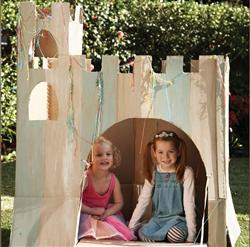5 Ways to Make New Year’s Resolutions as a Family
There are many ways to approach the New Year. For many of us, it means to assess our lives and change something we’re unhappy with. Whether it’s our diet, exercise routine, or our tendency to procrastinate, there’s always room for improvement in the coming year. When making changes and resolutions as a family, we as parents’ benefit, and our children learn more about self-discipline, and the value of making goals and achieving them. Here’s a few ways to include the entire family in this year’s resolutions.
Family New Year’s Resolutions
1. Make It an Activity
The best way to teach your children the importance of resolutions is by making it part of the family tradition. Sit down at the beginning of the year and reflect on the past year. Discuss your accomplishments and goals, as individuals and as a family. You can each talk about what worked this year and what didn’t.
Allow each family member to take a turn sharing something they are proud of and something they want to improve. It may be helpful for parents to go first, to give the children an idea of how to participate. If your child is old enough to write, he or she should write down their accomplishments and goals, and you can help your younger child by writing theirs down.
The best way to share what you have decided to focus on is to make a “master list.” The, hang it in a spot where your family often gathers together in your home. It’s also fun to drop your resolutions into a box and pull them out and read them during family night or over dinner.
2. Make Different Resolutions for Different Ages
What your child needs to work on depends on your child. If their diet is a concern, then encourage healthier eating habits for him as well as the whole family. If your daughter’s room is a mess, try to help her commit 10 minutes a day to cleaning it. As your child ages, he can be more active in coming up with goals. Thus, making it mean more to him when he achieves them.
For preschool-aged children, the American Academy of Pediatrics (AAP) recommends resolutions that focus on cleaning up toys, brushing teeth and washing hands and being kind to pets. However, parents who consider these behaviors part of their regular expectations may want to provide resolutions that focus on higher goals.
As a child reaches age five and up to age 12, he or she is more able to comprehend a resolution and participate more in the process of picking one. The AAP suggests this age group commit to drinking more milk and water daily, wearing a seat belt and being friendly to all children. What your child needs to work on is very personal. So, work with your child to come up with areas for improvement.
3. Lead by Example
No matter what age your child is, he or she is more likely to understand the value of goal setting if you take the lead. Just as with everything else you do, your child is watching. Think of how you can include your child in your resolution. “I’m going to drink more water this year, because water is good for me. Do you want to join me?” If you are finding yourself checking your e-mail when you should be spending time as a family, consider incorporating that into a goal. “I’m going to turn off my phone when I get home. Can you remind me?” Also, remember to keep your computer in your room until after dinnertime.
4. The Reason for Reward
We all know the feeling of meeting a goal, whether it be losing five pounds, quitting smoking or putting in extra hours to earn a promotion. Children also relish that thrill of accomplishment, especially when their parents are acknowledging it. As you go over the family list of resolutions each month or quarter, take time to acknowledge the successes. Along with reinforcing the resolutions that need more attention. Children benefit from their parents’ praise, and this also improves their self-esteem. This will help them to be consistent with positive behavior transforming them into a healthy adult.
5. Make It a Ritual with Flexibility
Talk to your child about being flexible with their goals. Goals can become unrealistic or unimportant over time. With that said, it’s perfectly acceptable to start a “New Year” goal in the middle of June! Revisit your goals on a month-by-month basis and talk about what you have accomplished. Find out if everyone is happy with their goals and progress. Keep encouraging your children throughout the year to maintain a healthy and positive mindset reflecting their goals. Additionally, how they can work toward accomplishing them.
However, your family arrives at resolutions, the best part is you’re doing it together! Plus, learning how to manage your role not only in the family but also in the larger world.
By Guest Blogger Whitney Barnard
Want to see more blogs like this and get notifications on local events and happenings? Subscribe to TMoM’s free weekly newsletters here.







